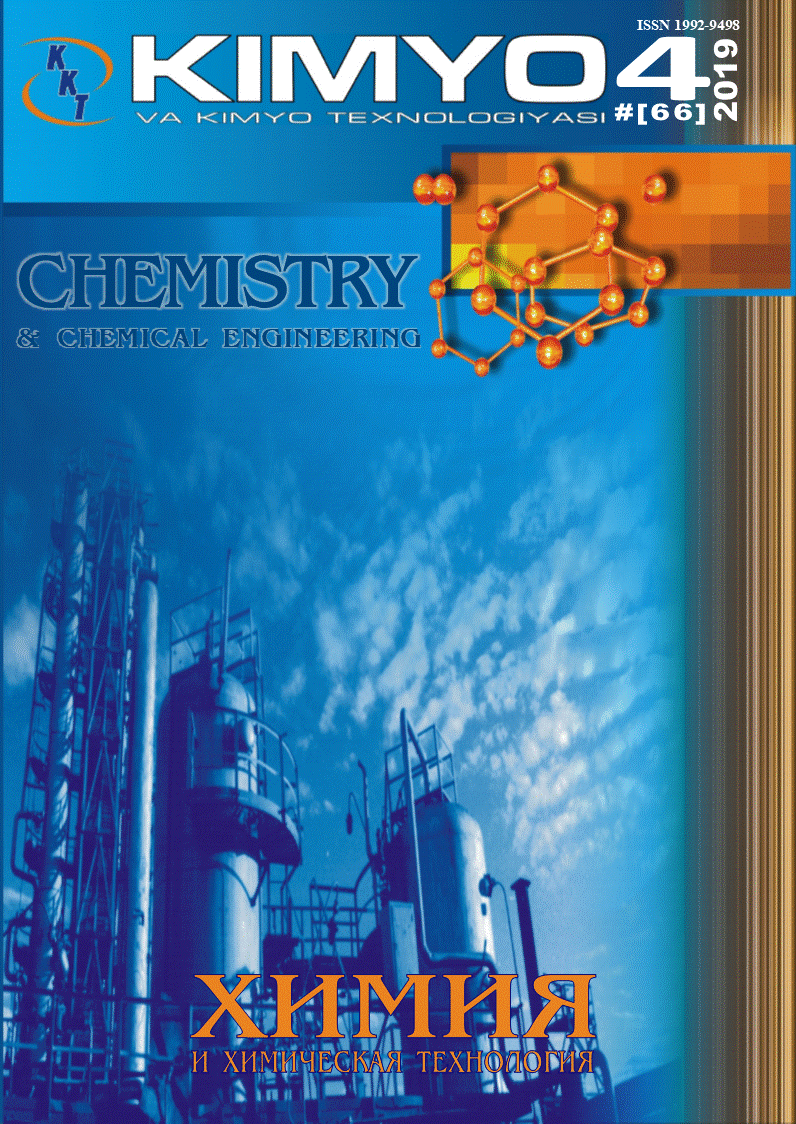
Abstract
The purpose of the study is to identify the reaction conditions for the complex formation of chitosan and the Bombyx mori protein at pH and to determine the structure and properties of the obtained samples.The properties of Bombyx mori chitosan (Xs) and protein in solutions and their interaction under various reaction conditions (concentration and pH 4,88-6,7) were studied. The analysis of the obtained results was studied and the fundamental possibilities of obtaining complexes based on Bombyx mori chitosan and protein were determined. Conductometric titration showed that the COO- groups in the protein chain of Bombyx mori accounted for 4.95%, and these groups were shown to be electrostatically bonded to the protonated amino group (NH2) of chitosan. Samples of the complexes were characterized by physicochemical methods. Using the IR spectrum method, it was shown that the absorption bands of the bending vibration of the NH and CN bonds (amide II) at 1573 cm-1 per 1641 cm-1 and NH2 bonds (amide I) at 1517 cm-1 per 1538 cm-1, as well as in the region of the CH2–OH bond at 1380 cm–1, the band expands to 1390 cm–1. The absorption band of ether bonds at 1032 cm-1 expands by 1068 cm-1. In general, the detected changes and shifts of the absorption bands in the IR spectra confirm the reaction of the complex between the chitosan molecule and the protein. The theoretical density functional theory (DFT) method showed that the protein has a greater ability to react with chitosan, the highest occupied (HOMO) of chitosan and lowest unoccupied molecular orbitals (LUMO) of the protein compete with the LUMO of the protein. Based on the structural properties of protein and chitosan, it can be concluded that it is possible to obtain biologically active complex preparations on their basis.
Recommended Citation
AVAZOVA, Oynavod and RASHIDOVA, Sayyora
(2024)
"COMPLEX FORMATION IN SOLUTION OF CHITOSAN AND BOMBYX MORI PROTEIN,"
CHEMISTRY AND CHEMICAL ENGINEERING: Vol. 2023:
No.
1, Article 7.
DOI: https://doi.org/10.70189/1992-9498.1580
Available at:
https://cce.researchcommons.org/journal/vol2023/iss1/7
